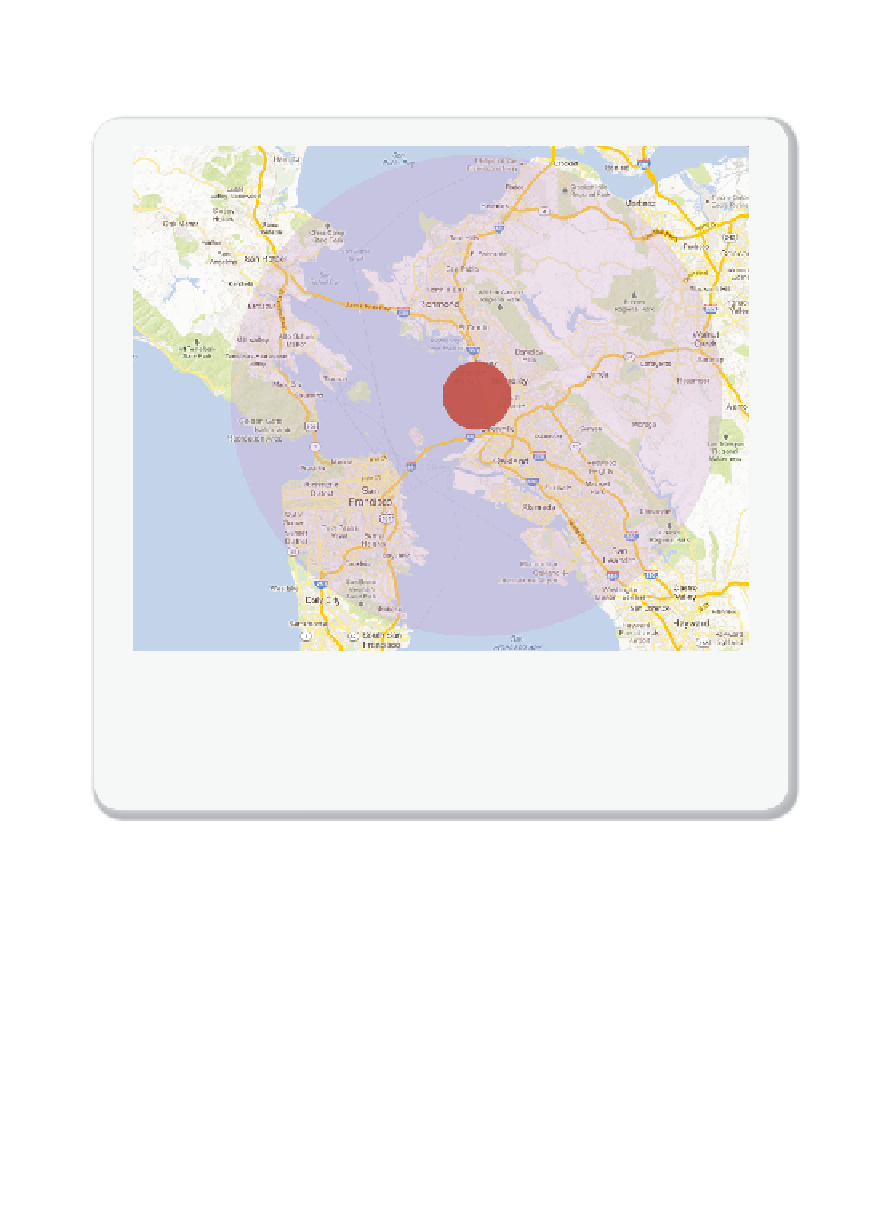Environmental Engineering Reference
In-Depth Information
Figure 8.1.2
Storage of fl ue gasses with and without carbon capture
Geological formation necessary for sequestering fl ue gas from a medium sized coal-
fi red power plant located in Berkeley and operating for 50 years; with carbon capture
(red circle with a 5 km radius) and without separating CO
2
(pink circle with a 25 km
radius).
Map data from Google.
The above discussion was for a single medium-size coal-fi red power
plant. If we envision applying CCS to all coal-fi red power plants, we get
very large numbers. These numbers are so large that some people are
quite skeptical about the feasibility of CCS. It is therefore important to put
these numbers into perspective. In the production of oil, water is cur-
rently used to replace the oil that has been pumped out of the ground. In
Table 8.1.1
, the total volume of water injected as part of oil production is
compared to the total volume of CO
2
point source emissions for the USA.
Perhaps surprisingly, the total volume of CO
2
we need to sequester is
only slightly larger than the amount of water we are already injecting as
part of our oil and gas production. However, nobody has injected such
large volumes of CO
2
into geological formations and all our science is








Search WWH ::

Custom Search